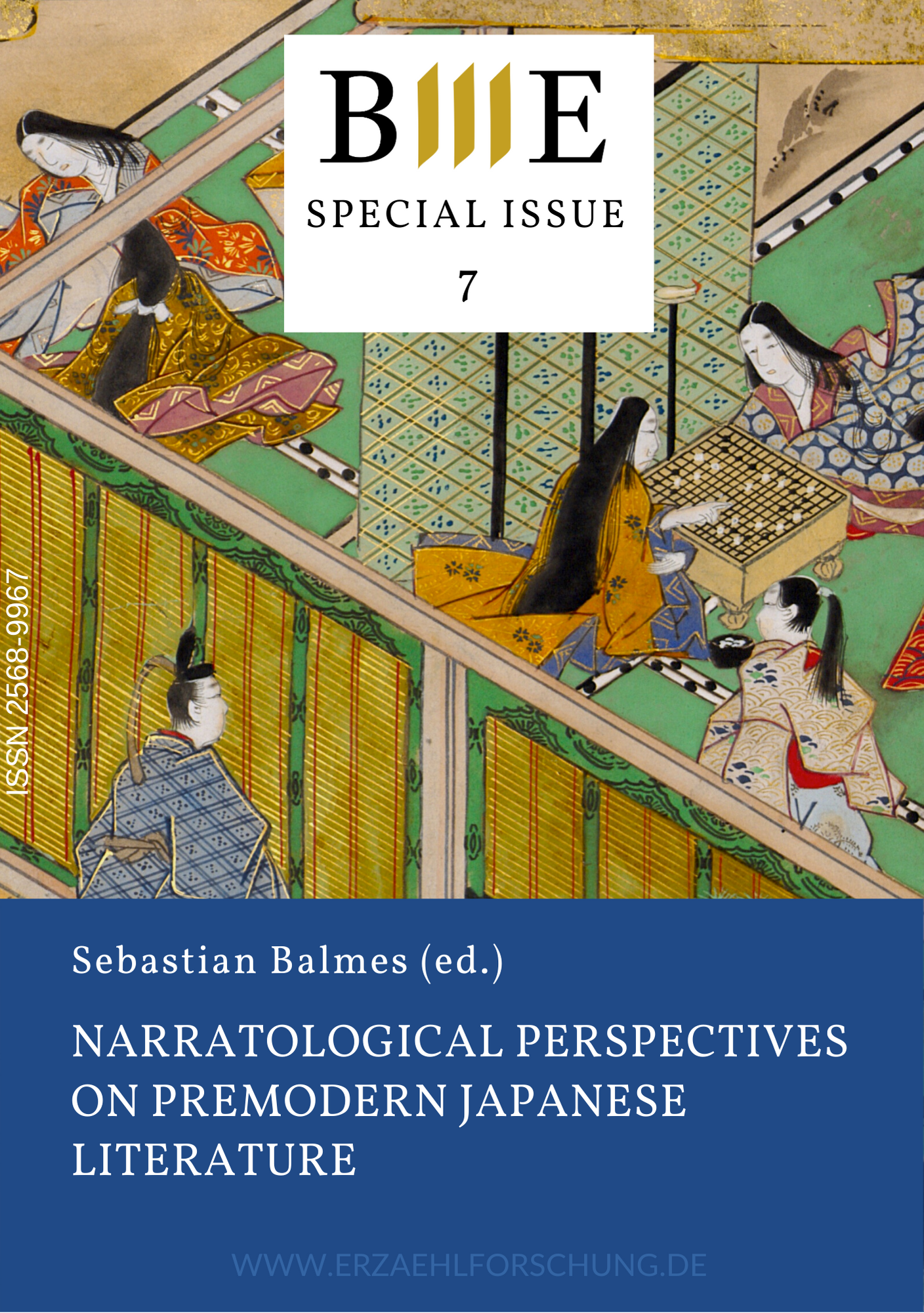‘Genji monogatari emaki’ as Trans- and Intermedial Storytelling. Previous Knowledge and Time as Factors of Narrativity
DOI:
https://doi.org/10.25619/BmE20203112Schlagworte:
Japanese LiteratureAbstract
The ‘Illustrated Handscrolls of the Tale of Genji’ (‘Genji monogatari emaki’) are based on ‘Genji monogatari,’ a literary work written at the beginning of the eleventh century by Murasaki Shikibu. The handscrolls were manufactured between approximately 1120 and 1140. This paper scrutinizes certain relationships between the literary work and the excerpts contained in the handscrolls as well as the relationships between the textual excerpts and the pictures of the handscrolls. The leading question of the examination is the extent to which the description of time is included in the excerpts and pictures, and how this sheds light on the problem of ‘potentially narrative paintings.’ These issues will be discussed by taking the hypotheses of two Japanese scholars into account. While Sano Midori claims that an adequate reception of the handscrolls requires the knowledge of the original text, Shimizu Fukuko takes the opposite standpoint. For her, previous knowledge is not necessary. However, as seen from a cognitive narratology perspective, the analyses will show how previous knowledge can evoke images of passing time, even in a single picture.
Downloads
Veröffentlicht
Ausgabe
Rubrik
Lizenz
Copyright (c) 2020 Robert F. Wittkamp

Dieses Werk steht unter der Lizenz Creative Commons Namensnennung - Nicht-kommerziell - Keine Bearbeitungen 4.0 International.





